call us for your Mold inspection/mold testing needs
How Mold Grows and Why Mold Testing is Required
Mold is a term used to describe fungal materials on wet building materials.
Fungal growth frequently occurs when the following three conditions are present: Temperature, humidity, and a food source. Although the temperature range for mold propagation varies based on the species, most fungal species associated with indoor mold grow well at temperatures ranging between 60 ⁰ F - 80 ⁰ F.
Elevated humidity levels greater than 60% relative humidity (RH) contribute to mold growth which can result in mold contamination. Poor ventilation, flooded crawl spaces, water damage that is not dried out properly, and everyday activities such as cooking, running appliances such as dishwashers, doing laundry, and showering without using an exhaust fan can also cause high indoor humidity levels.
Mold feeds on all organic matter which includes wood, wallpaper, fabric, and particularly cellulose in paperbacked sheetrock. It is often hidden from sight behind baseboards and can be present growing inside walls without being visible on the exterior wall surfaces. Mold begins to grow on damp surfaces within 24 to 48 hours. If you are not sure that you have mold growth, the best course of action is to call a professional mold inspector for a mold assessment. They will evaluate, moisture, and humidity and identify visible mold if present. Airborne fungal contamination is a term that describes unhealthy concentrations of mold spores in the air.
Mold spores are invisible to the naked eye and levels can quickly multiply into thousands of spores per cubic meter where fungal growth is occurring. Some common mold species that are identified in cases of airborne fungal contamination include Aspergillus and Penicillium, Stachybotrys (aka black mold), Chaetomium, and Alternaria. Adverse health effects of airborne fungal contamination include but are not limited to respiratory infections, asthma, allergic bronchopulmonary mycosis (ABPM), allergic fungal sinusitis (AFS), and hypersensitivity pneumonitis (HP).
Visible mold requires removal which is called remediation. Visible mold should be removed by a professional mold remediation contractor inside a containment to limit the spread of mold spores inside the living area. Inside the containment, the mold-impacted materials are carefully removed and the air is scrubbed by HEPA filters which return the air to normal mold spore levels.
After the mold has been removed the containment is tested by a qualified mold inspector to verify that the air is free from mold spores and safe to breathe. This testing is called Post Remediation Verification (PRV). Mold spore counts inside of the containment are compared to mold spore counts outdoors to ensure mold spore counts are equivalent to naturally occurring mold spore levels.
We are licensed and certified for all Mold Inspection and Mold Testing. We work with Remediation and Insurance Companies. Call us when you need professional Mold Inspection, Mold Testing, or Mold Sampling.
AllPro Environmental Services
4600 Kietzke Lane, Suite A-102, Reno, NV 89502 United States
This website uses cookies.
We use cookies to analyze website traffic and optimize your website experience. By accepting our use of cookies, your data will be aggregated with all other user data.
